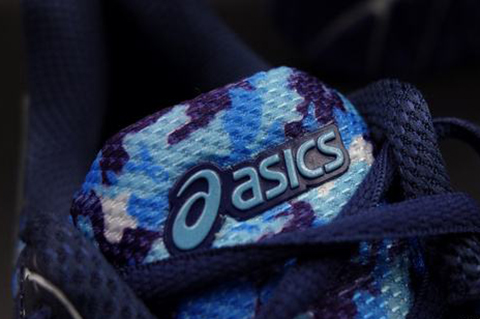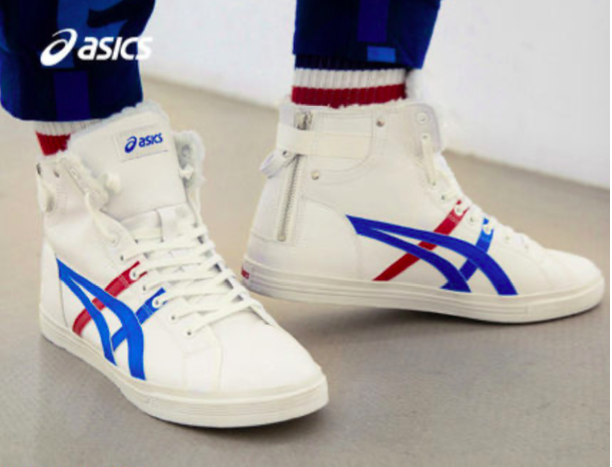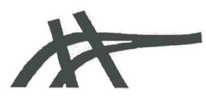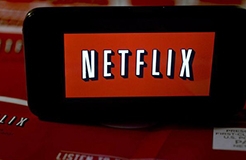Did not receive verification mail? Please confirm whether the mailbox is correct or not Re send mail

Vapor
- 2020-06-22 17:21:27
The Evolution and Retrospect of Trademark Infringement Recognition in Exports
A copycat trademark infringement is the act of using a product bearing a trademark similar to that of the infringed trademark. Usually the infringer will register a trademark beforehand as the basis of his/her rights or distort a trademark owned by the right holder in various forms. The distorted trademark resembles the registered trademark owned by the right holder, which brings difficulty to the infringement judgment, especially for the customs and other administrative law enforcement departments.
To invalidate a trademark, one will need to apply to Trademark Review and Adjudication Board, and possibly Beijing Intellectual Property Court and Beijing High People’s Court, until Trademark Office of National Intellectual Property Administration issues an invalidation decision, which usually takes a long time. However, during this process, the infringer may still profit from trademark infringement.
The infringer claims that all the products are shipped to Turkey, pretending to adopt the pattern of Original Equipment Manufacturer (hereinafter referred to as “the OEM”), so as to create defenses for trademark infringement. The fact that the OEM is considered as non-infringement makes it difficult and inefficient for the right holders to safeguard their legal rights.
In May, 2011, ASICS Corporation firstly noticed that QILOO Company demonstrated the suspected infringing products in Canton Fair。
On 23rd August, 2013, QILOO Company exported 9599 pairs of infringing shoes via Xiamen Customs to Turkey.
On 20th October, 2013, ASICS Corporation filed a complaint through the agency, and investigated the factory producing infringed products in Nan’an, Fujian Province. Xu Dingcai (hereinafter referred to as “Xu”) confirmed and singed on the investigation document, later, Nan’an Administration for Industry and Commerce (hereinafter referred to as “Nan’an AIC”) penalized Xu.
In Early 2014, ASICS Corporation filed a lawsuit in Quanzhou Intermediate People’s Court, suing QILOO Company and Xu for trademark infringement, asking to stop the infringement act and compensate for 1 million yuan.
On 10th July, 2015, the first-trial court held that ASICS Corporation’s trademark was infringed and imposed a fine of 500 thousand yuan.
At the end of 2015, QILOO sued Nan’an AIC and requested to repeal the recognition that QILOO placed orders from Xu. Afterwards, Nan’an AIC repealed the recognition.
On 20th June, 2016, the second-trial in Fujian High People’s Court affirmed the infringement. QILOO Company was fined for 400 thousand yuan.
In 2017, QILOO Company appealed to the SPC.
On 27th September, 2019, the appeal of QILOO Company was rejected by the SPC.

The case where ASICS Corporation sued QILOO International Limited for trademark infringement was finally adjudicated by the Supreme People’s Court

Lately, the Supreme People’s Court (hereinafter referred to as “the SPC”) has issued a retrial adjudication on the case where the well-known sports company named ASICS Corporation sued QILOO International Limited (hereinafter referred to as “QILOO Company”) for trademark infringement. The SPC once again adjudicated on the issue of infringement of products for export and dismissed the retrial application filed by QILOO Company. Up to this point, this trademark infringement dispute lasted nearly nine years has finally been settled.

Difficulties
This is a typical case of exporting copycat infringement products. The main difficulties of this case are:
Timeline
Further investigation revealed that, on 23rd August, 2013, when Xiamen Customs decided to detain the infringing products, QILOO Company proved that it was authorized by the trademark owner to use the registered trademark (#5647108) as below:

This is the trademark registered by ASICS Corporation.

This is the trademark registered by Zhuang Yanpeng, #5647108.
From the timeline above, we can tell that, in order to fight counterfeit infringement, the right holder made use of various means to safeguard legal rights by detecting infringing products in Canton Fair, applying for measures taken by the Customs for intellectual property protection, applying for actions taken by the local Administration for Industry and Commerce(hereinafter refered to as “AIC”), filing lawsuits and so forth. During the trials, the defendant sued the local AIC for rebutting partial infringement recognition. Meanwhile, regarding the argument of the defendant, ASICS Corporation also carried out the procedures of objection, cancellation and invalidation against the trademark #5647108 simultaneously. Eventually, in May, 2016, this trademark was revoked after the final judgment of Beijing Higher People's Court
Main Points of the Adjudication
Distorted trademark cannot be used as registered trademark
During the first and the second trials, these two above-mentioned trademarks were both valid. However, since the trademark the defendant used was different from the so-called “authorized” trademark, both Quanzhou Intermediate People’s Court and Fujian High People’s Court held that the infringed trademark involved in this case was different from the trademark the defendant claimed to be authorized, which according to Article 51 of the Trademark Law 2001, cannot be recognized as use of a registered trademark. By comparison, these two courts held that the trademark of ASICS Corporation has a certain influence, and that, with the trademarks used by the infringer and ASICS Corporation being valid, trademark users authorized by the trademark owner shall strictly follow the regulations while using such authorized trademark. Nevertheless, the trademark used by the infringer and the trademark the infringer was authorized to use showed a clear contrast, and the prior trademark was more similar to the ASICS Corporation’s trademark. The infringer did not properly use the authorized trademark, or reasonably differentiate these two valid trademarks, thus he argued that using the authorized trademark wouldn’t infringe ASICS Corporation’s trademark.
The adjudication of the SPC affirmed the above judgments, added that, “Since the infringing products in the present case are shoes, when the suspect infringing trademark is affixed to the irregular surface of the shoes, it is easier for the public to get confused.”
Affixing the trademark to the products, considering the irregular surface on which the trademark was affixed, and making a judgment in view of the two aforementioned points, it accords with the intent of the trademark law, that is, protect the incorporation of “symbol and product”.
The Recognition of Infringement in Exports
It has been a controversial topic in China while recognizing infringement in the OEM products for export.
In 2001, Shenzhen Intermediate People’s Court held that, the exporting of Nike Ski Jackets to Spain was identified as trademark infringement [1], which was concluded by citing Subsection (1) of Article 52 of the Trademark Law 2001:“Using a trademark that is identical with a registered trademark on the similar goods without obtaining licensing from the trademark registrant”, i.e. as long as one uses a trademark identical with/similar to a registered one without authorization from the trademark owner, the trademark shall be identified as trademark infringement.
But when it comes to 1st July, 2010, the General Office of the SPC replied to General Administration of Customs in the letter named (Fa Ban [2010] 350), indicating that, “the affixed trademark of the OEM products is only meant to be recognized outside China, not inside China, therefore the public in China would not come across with such products and get confused”. It indicated that the OEM products would not constitute trademark infringement, which was adopted by the People’s courts and customs.
In 2015 Pujiang Ya-Huan Locks Co., Ltd. exported PRETUL locks to Mexico. It was held that such act “was not served as distinguishing trademark and would not cause any confusion to the public while identifying trademark-affixed OEM products and products manufactured by Focker Security Products International Limited”. Based on such conclusion, infringement was not found [2]. Later on, the Dongfeng case affirmed the decision of the PRETUL case [3].
The up-to-date decision made by the SPC showed that the SPC changed its thought while recognizing trademark infringement in the OEM products. In 2019, in Honda Motor Co., Ltd. v. Chongqing Hengsheng Xintai Trading Co., Ltd. et Chongqing Hengsheng Group Co., Ltd. (hereinafter referred to as “the Honda case”) [4], the SPC held that, affixing trademark on the OEM products, with the possibility of distinguishing the origin of the products, can be recognized as “trademark use” in the sense of the Trademark Law. And with the development of E-commerce, even if all the OEM products are sold to foreign countries, it is possible for them to be imported to China. And when Chinese consumers travel and go shopping abroad, it is possible for them to be confused and to confound the OEM products. Consequently, the OEM products may cause confusion to the public in China. Having said that, the SPC affirmed that the OEM products manufactured by Chongqing Hengsheng Xintai Trading Co., Ltd. et Chongqing Hengsheng Group Co., Ltd. infringed the trademark owned by Honda Motor Co., Ltd.
From the Honda case, we can see that the People’s courts was no longer make a single pitch on whether considering the OEM products as trademark infringement, instead, they followed the stipulation under the Trademark Law, considered the domestic economy and economy in foreign countries, as well as combined the changes in production modes, markets and consumption patterns.
The case where ASICS Corporation sued QILOO Company has been through the controversy over the recognition of infringement in the OEM products.
In 2013, the suspected infringing products were found while being exported through Xiamen Customs, right after the reply to General Administration of Customs issued by the General Office of the SPC, which was one of the reasons why Xiamen Customs approved the exportation (another reason was that it was difficult to identify the similar trademarks as infringement).
After the failure of detaining the infringing products in Xiamen customs, ASICS Corporation investigated the manufacturing plant with the help of an agency, reported to Nan’an AIC, and successfully seized the infringing products in the manufacturing plant run by Xu. By questioning Xu, the fact that the exporting orders placed by QILOO Company was determined. Shortly afterward, Nan’an AIC recognized the infringement and penalized Xu in accordance with the Trademark Law and regulations stipulated by Administration for Industry and Commerce. Yet the orders placed by QILOO Company were not further investigated. Even though the statement made by Xu was recorded in the Notice of Penalty, without questioning Xu and examining the evidence, the evidence was flawed (this is the weakness of some local AIC while detecting trademark infringement, which can only initiate investigations against a single target but not joint infringers). This also laid a potential problem that after being sued by QILOO Company during the second trial, Nan'an AIC had to revoke the conclusion of QILOO Company ordering and producing the infringed products as a client. Moreover, it also led to the subsequent withdrawal by the court of the fact that two defendants jointly infringed the trademark and the reduction of the fine from 500 thousand yuan to 400 thousand yuan.
Most significantly, the lack of relevant evidence of the factory's production behavior makes the present case more entangled in the confusion of whether simply affixing the trademark on the products for export would cause confusion to the public and be recognized in China. Although, at the moment, the mainstream opinion is that trademark infringement is not applied to OEM products. However, being affected by such opinion, all non-OEM products for export, the trademarks of which are not recognized and served as a trademark in China, constitute no infringement as well. At this stage, it can also be seen that some export companies and manufacturing companies make use of this loophole and register trademarks in some small countries where the Trademark Protection Law is weak, and fabricate relevant trademark license so as to pretend to be the OEMs and avoid being investigated.
Fortunately, as for this case, although the defendant put forward the OEM non-infringement defense, it was not recognized by the People's Court at both first and second trials. Fujian High People’s Court held that, manufacturing and exporting shoes with an infringing trademark by the infringer was a sales act. As the products were all for sales and the sales took place inside China, it was held that the OEM defense couldn’t be applied here.
To further explain, Fujian High People’s Court added that, the judicial interpretation of the Trademark Law in China did not confine the geographical boundary of “the public”. Even if all the products were exported, when foreign importers select products in China, they would recognize the trademark affixed on the infringing products. As long as the recognition of the trademark takes place in China, all the consumers or operators related belong to “the public”. It means foreign individuals and entities exporting products from China to other countries for running business or consumption belong to “the public” under China’s Trademark Law. Hence, these shoes with infringing trademark claimed to be “for sale in countries outside China and all for export” by the infringer belong to the adjusted infringing products protected by the Trademark Law in China.[5]
Since ASICS Corporation had complaint in Canton Fair that QILOO Company infringed its trademark in May 2011, and after the evidence chain of Nan’an AIC's investigation was broken, the record of this complaint became the foremost evidence which proved that QILOO Company infringed the trademark intentionally.
For that reason, the People’s Courts at the first and second trials affirmed the infringement. But in 2017, QILOO Company applied to the SPC for a retrial. The main reason was that the products were exported to Turkey, so it should not constitute infringement.
In the adjudication rendered at the end of 2019 by the SPC, besides Article 52 of the Trademark Law 2001, the SPC also cited Article 3 of Regulations of the People’s Republic of China on Customs Protection of Intellectual Property Rights, that is, “The State prohibits the importation and exportation of goods which infringe intellectual property rights”. This acknowledged the customs for protecting intellectual property rights in accordance with the above-mentioned Regulations.
Meanwhile, the SPC held that, with economic globalization being expanded as well as division and cooperation in international economy being complicated, disputes arising from trademark infringement in products for export emerge in different ways and are getting a lot of attention at home and abroad. Generally, the export of the products accused of infringing trademark involves overseas distribution and sales. It may directly or indirectly refer to and impact on domestic manufacture and distribution. It may also substantially impact and cause damages to domestic economic order and the legitimate rights enjoyed by trademark owners. Hence, we should uphold the judicial policies of judicial leadership, strict protection, classification, proportion coordination. We should also discipline and guide operators on respecting intellectual property rights and operating in good faith, in order to better serve the need to improve high-quality economic development and build a higher level of open economy. [6]
It showed that the SPC has noticed the complexity in recognizing trademark infringement of exports of goods, and affirmed the trademark infringement considering the mode of production, the transformation of market and consumption patterns, as well as facts of the case, from the perspective of global economic integration. This kind of judicial thought echoes the Honda Case’s thought, it can even be seen as a throwback to NIKE’s case in 2001.
The reasoning of the adjudication in the present case is good news for all the international trademark owners. The excuse of “authorization from the overseas trademark owners" can no longer be the "protection umbrella" or "safety net" for domestic enterprises and factories to defend against trademark infringement. Trademark owners can be more fearless and try to detain infringing products effectively with Customs Protection of Intellectual Property Rights. They can also request exporters to bear the liability for infringement. It is obviously more conductive to the resolution of a growing number of disputes over trademark infringement rights in exports in recent years. It also shows China’s commitment and courage as an export powerhouse from the perspective of strict protection and proportion coordination.
[1] Shenzhen Intermediate People’s Court (2001) Shen Zhong Fa Zhi Chan Chu Zi No. 55 Civil Judgment
[2] The Supreme People’s Court (2014) Min TiZi No. 38 Civil Judgment
[3] The Supreme People’s Court (2016) Zui Gao Fa Min Zai No. 339 Civil Judgment
[4] The Supreme People’s Court (2019)Zui Gao Fa Min Zai No. 138 Civil Judgment
[5] Fujian High People’s Court (2016) Min Min Zhong No. 8 Civil Judgment
[6] The Supreme People’s Court (2019) Zui Gao Fa MinShen No. 4022 Civil Adjudication
Source: iprdaily.com
Author:Catherine Law
Editor:Vapor
- I also said the two sentence
- Also you can enter 140words






